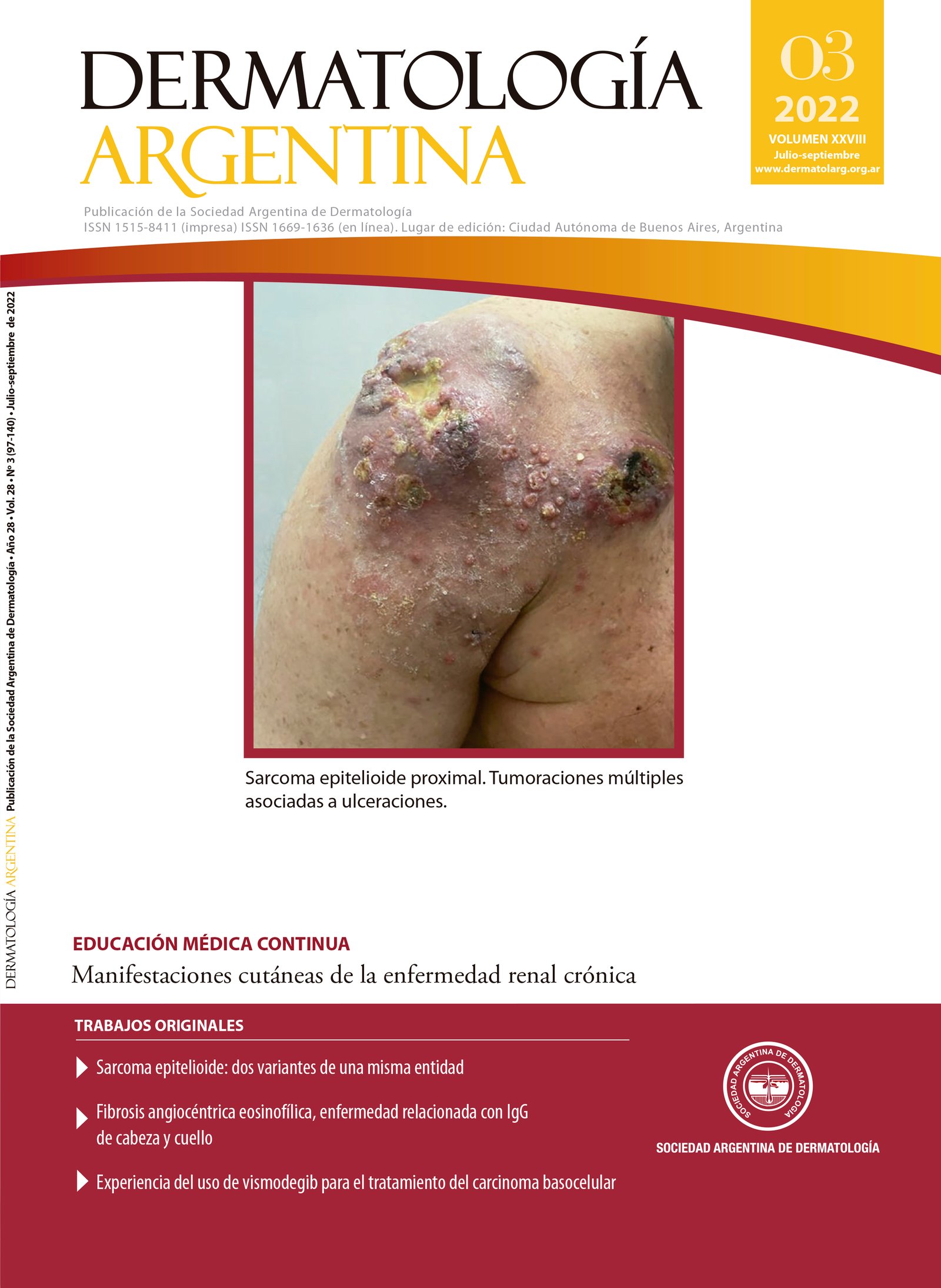Think of: toxic epidermal necrolysis
Keywords:
toxic epidermal necrolysis, cutaneous leukocytoplastic vasculitis, plaque psoriasisAbstract
Toxic epidermal necrolysis. A rare adverse reaction to certain drugs, possibly fatal, that occurs within 21 days of their administration.
Prodromal symptoms: symptoms of the upper airway, fever and skin pain.
Severe respiratory and gastrointestinal cutaneous and mucosal involvement, with erythematopurpuric plaques that converge in the first instance, later progressing with intense exfoliation. Systemic symptoms: fever, adenopathies, hepatitis, cytopenias, cholestasis.
Histopathology (HP): apoptotic keratinocytes in basal and suprabasal layers, then subepidermal bullae with confluent necrosis in the epidermis, added to a scant lymphocytic perivascular infiltrate.
Cutaneous leukocytoplastic vasculitis. Vascular inflammation that destroys the walls of small vessels, mainly postcapillary venules, of a necrotizing type.
It can be idiopathic or secondary to certain infections, drugs, autoimmune diseases or neoplasms. His prognosis is benign.
It presents with palpable purpuric lesions, preferably in sloping areas subjected to pressure. They are asymptomatic, painful or pruritic, with a symmetrical distribution. They can leave a postinflammatory hyperpigmentation. Systemic symptoms: fever, weight loss, myalgia, arthralgia, abdominal pain, paresthesia.
HP: vascular obliteration (fibrinoid necrosis, endothelial swelling, intraparietal infiltrate), inflammatory infiltrate: early, leukocytoclasia (abundant neutrophils, few eosinophils and lymphocytes) and late; granulomas (abundant macrophages).
Plaque psoriasis. Chronic systemic inflammatory disease of immune cause due to genetic predisposition and environmental triggers.
Vulgar psoriasis presents with erythematous, scaly, well-defined plaques with thick scales, associated with intense pruritus and severe cardiovascular risk factors due to persistent inflammation.
HP: acanthosis with elongated interpapillary ridges, hyperkeratosis and parakeratosis, dilated blood vessels, and perivascular infiltrate of lymphocytes with isolated or grouped neutrophils in the epidermis.
References
I. Acevedo A, Baccarini E, Bourren P, Crespo MA, et ál. Psoriasis. Consenso Nacional de Psoriasis. Guía de Tratamiento. Actualización 2019. Publicación de la Sociedad Argentina de Dermatología 2019;1:1-16.
II. Hotzenecker W, Prins C, French L. Eritema multiforme, síndrome de Stevens-Johnson y necrólisis epidérmica tóxica. En: Bolognia J, Schaffer J, Cerroni L. 4.ª ed. Dermatología. Elsevier; 2018:332-347.
III. Liste-Rodríguez S, Chamizo-Cabrera M, Paz-Enrique L, Hernández-Alfonso E. Vasculitis leucocitoclástica. Rev Cub Med General Integral. [Internet]. 2015;31(4). Disponible en: http://www.revmgi.sld.cu/index.php/mgi/article/view/94 [Consultado julio 2022]
IV. Sánchez G, Bianchi CA, Stringa S. Vasculitis. En: Biachi O. 1.ª ed. Dermatopatología. Principios básicos. Actualizaciones Médicas; 2007:57-68.
Downloads
Published
Issue
Section
License
Copyright (c) 2022 on behalf of the authors. Reproduction rights: Argentine Society of Dermatology.

This work is licensed under a Creative Commons Attribution-NonCommercial-NoDerivatives 4.0 International License.
El/los autor/es tranfieren todos los derechos de autor del manuscrito arriba mencionado a Dermatología Argentina en el caso de que el trabajo sea publicado. El/los autor/es declaran que el artículo es original, que no infringe ningún derecho de propiedad intelectual u otros derechos de terceros, que no se encuentra bajo consideración de otra revista y que no ha sido previamente publicado.
Le solicitamos haga click aquí para imprimir, firmar y enviar por correo postal la transferencia de los derechos de autor












